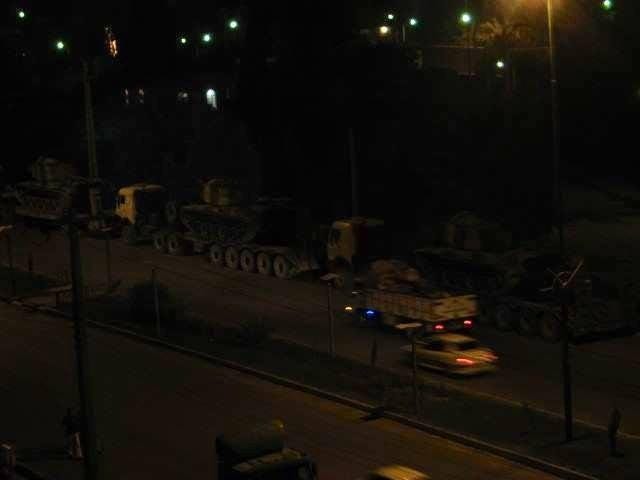Shyam Bhatia in London
A highly educated Pakistan-born woman has emerged as the jewel in the crown of Islamic State (IS) terrorists who seek world domination by creating their version of a caliphate that stretches from South Asia to the borders of Rome.
Before his barbaric beheading, IS offered to free James Foley and other Western hostages still in captivity if Washington sanctioned the release of Dr Aafia Siddiqui, who was arrested in Afghanistan in 2008.
A mother of three, known in Pakistan as the "Grey Lady of Bagram", she is currently serving an 86-year prison sentence in a Texas jail for attempting to kill American soldiers in Afghanistan. When she was being questioned back in 2008, she tried to shoot her interrogators and was shot and wounded in return.
At the time of her arrest she was also caught with plans for a 'mass casualty attack' against key US targets, including such New York landmarks such as the New York Metro, Statue of Liberty and Empire State Building. Her plans also involved infecting innocent citizens with Ebola and a dirty bomb.
Siddiqui's expertise dates back to her time at Brandeis University in the US where she obtained a Ph.D in biology before training as a neuro-scientist at the Massachusets Institute of Technology (MIT).
Karachi-born Siddiqui, who has a PhD from Brandeis University, before training as a neuro-scientist at MIT, is married to a nephew of 9/11 mastermind Khalid Sheikh Mohammed. It was he who first mentioned her name to US interrogators.
The irony of Siddiqui's significance is that her gender marks her out as part of a lesser breed in the Islamic caliphate where women must be veiled and banned from driving and where goats grazing in the fields are required to have their genitals covered.
The Pakistani authorities usually try to distance themselves from suspected terrorists, but when Siddiqui was arrested Pakistani Prime Minister Yousef Raza Gilani called her the "daughter of the nation" and begged the US to let her go. Violent protests also took place outside the US consulate in Karachi.
Former CIA analyst John Kiriakou commented about Siddiqui in 2008, "Her education troubled us. We know that she's extremely bright. She's radicalised. We know that she had been planning, or at least involved in the planning, of a variety of operations, whether they involved weapons of mass destruction or research into chemical or biological weapons, whether it was a possible attempt on the life of the President."
Deborah Scroggins, author of 'Wanted Women: Faith Lies and the War on terror" describes Siddiqui as "the poster child for jihadists around the world."
She was sentenced at a time when US legislators had approved new rules saying anyone trying to kill US personnel would get special, strict sentencing.
The attempts to free Siddiqui in exchange for Foley highlight the perils facing other hostages held by IS which seeks to extract maximum benefits from their governments before they are released.
The hostages include some 90 Indian, Turkish, American and British nationals who are being held at various locations in Northern Iraq and Syria.
Washington and London have said that where their nationals are concerned, they never negotiate with terrorists, but that is a policy that is selectively implemented.
When US soldier Bowe Bergdahl was kidnapped earlier this year by the Afghan Haqqani network, the Americans released five Taliban prisoners held in Guantanamo Bay in exchange for his release. When British hostages Paul and Rachel Chandler and Judith Tebbutt were taken hostage in Somalia in the past four years, London allowed millions to be paid to secure their freedom.
Earlier this year, the governments of France, Spain, Italy and Denmark are each alleged to have paid lucrative sums to secure the release of their own hostages held in Syria. Small wonder then that hostage taking is now classified as one of the world's most lucrative professions.
According to some estimates ransom taking in recent years has generated more than $1560 million for hostage takers. But money remains only one element when it comes to saving lives. When British IT consultant Peter Moore was kidnapped in Iraq in 2009 by an extremists Shia group, London agreed to release the group's leader from prison in exchange for Moore's own freedom.
Knowing Dr Aafia Siddiqui — ‘The Grey Lady of Bagram’

 This photo reportedly depicts an 81st Division M-60A1 in Khaneghein. Via social media
This photo reportedly depicts an 81st Division M-60A1 in Khaneghein. Via social media

 An Iraqi Kurdish Peshmerga fighter loads a gun on the front line in Khazer, near the Kurdish checkpoint of Aski kalak, 40 km West of Arbil, the capital of the autonomous Kurdish region of northern Iraq, on August 14, 2014.
An Iraqi Kurdish Peshmerga fighter loads a gun on the front line in Khazer, near the Kurdish checkpoint of Aski kalak, 40 km West of Arbil, the capital of the autonomous Kurdish region of northern Iraq, on August 14, 2014.









